One of the ways I chart the progress of the tiny house movement is by the company it keeps, and by that measure, tiny homes on wheels have made some pretty incredible strides toward mainstream acceptance lately. We’re now living in a time when “Tiny House Hunters” comes on HGTV right after regular “House Hunters,” and shopping for a small home looks no stranger than shopping for a log cabin.
The latest step forward I’ve noticed for the movement is the inclusion of tiny homes on wheels in this fall’s Build Small Live Large Summit in Portland, Oregon. The Summit is about how homes under 1,000 square feet can save people money, lighten their environmental footprint, connect them to their communities, and look beautiful – all while helping cities add desirable and affordable housing. The content is focused on backyard cottages and mother-in-law apartments, small home communities like cohousing or pocket communities, and tiny houses on wheels.
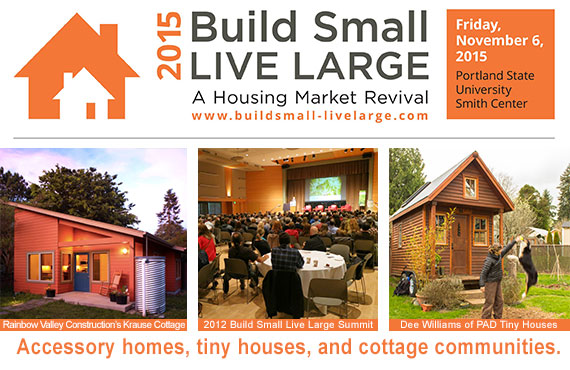
It’s exciting to me that tiny homes are emerging from their “black sheep” status to appear in sessions right alongside perfectly legal and long-established home types like mother-in-law apartments, known more formally as accessory dwellings or “ADUs”. Build Small Live Large brings a new level of professional attention to small homes, and especially to small homes that push traditional boundaries, like homes on wheels and small community developments. Some of the event sponsors even include agencies from the State of Oregon and the City of Portland, as well as private real estate, design and construction companies. Small homes may be a niche, but they’re a niche that’s exploding with popularity and interest, and that’s now getting the market attention it deserves.
What’s Working and What’s Next in Small Homes
With over 30 speakers representing the most experienced and creative people making small homes in the Pacific Northwest, Build Small Live Large is the place to see case studies, designs and strategies you won’t find anywhere else. Dee Williams from PAD Tiny Houses, tiny house pioneer and author of The Big Tiny, will speak about her personal experience of tiny house living as one of the keynote sessions of the day. She’ll share the keynote stage with Alan Durning, founder of the environmental non-profit research center Sightline Institute, which has become a vocal advocate for the ability of small homes to create much-needed affordable housing in cities and to reduce the negative environmental impacts of building big.
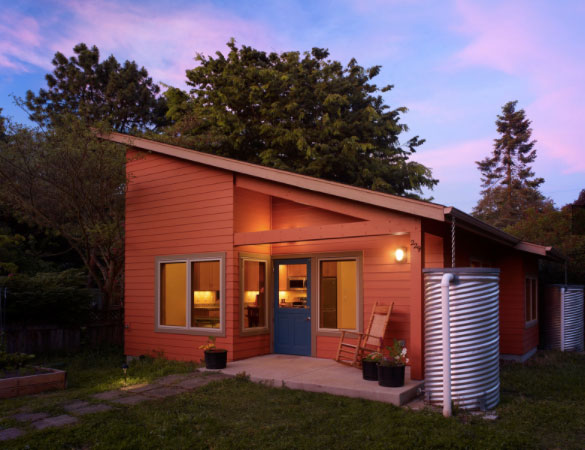
Attendees of the Summit can learn how to build and rent out a legal ADU, see successful examples of small house communities, and get inspired by inventive designs. The day will end an energizing look at the beautiful homes of the “Best of Small” Design Slam, and attendees can meet with the pioneering builders and designers of small houses throughout the event to find professional help to turn their plans and designs into reality. Real tiny houses will be also be available to tour outside of the Summit venue all day.
“The Build Small Live Large Summit is the ‘big tent’ of small housing,” says conference organizer and PAD Tiny Houses co-owner Joan Grimm, who was inspired by the original Build Small Summit in 2012 to create an ADU out of unused square footage in her home. “There’s no other event where people can learn about this many different kinds of small building all in one place, on one day. The response to the last Summit was overwhelmingly positive, and we’re excited to have assembled so many regional experts on small homes to share case studies and strategies people just won’t find anywhere else.”
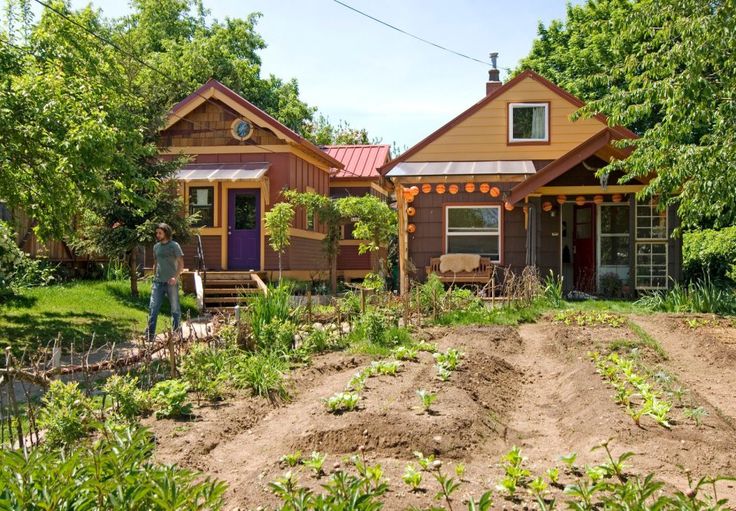
Some of the speakers include:
-
Ross Chapin, small home architect and author of Pocket Neighborhoods.
-
Kol Peterson, founder of the Caravan Tiny House Hotel and organizer of the popular ADU Tours that open up real ADUs all over Portland to interested residents.
-
Eli Spevak from Orange Splot LLC, the designer of creative small home communities like Ruth’s Garden Cottages, a single-family home with two legally-permitted “detached bedrooms” that function like separate small homes.
Small Home Events All Weekend
Two additional events over the weekend are running in conjunction with the Friday Summit so people can learn even more about specific building types like tiny houses on wheels or ADUs. With a separate registration, attendees can also take the PAD Tiny Houses weekend workshop Tiny House Basics to learn how to build a tiny home on wheels. For those who are more interested in ADUs, there’s a Saturday ADU Tour of Portland and an all-day educational class called the “Building An ADU on Your Property” class on Sunday.
The Summit is a unique way to explore a broad range of small housing options, and to learn about the truly creative approaches people are taking to turn their visions into reality. From clever uses of single-family lots to bigger endeavors like tiny house communities for the homeless, Build Small Live Large is where you’ll find out what’s happening on the leading edge of the small home movement, and hopefully find your right place in it, too.
Early registration discounts end on October 13th, so visit the Build Small Live Large Summit online and register now to save!
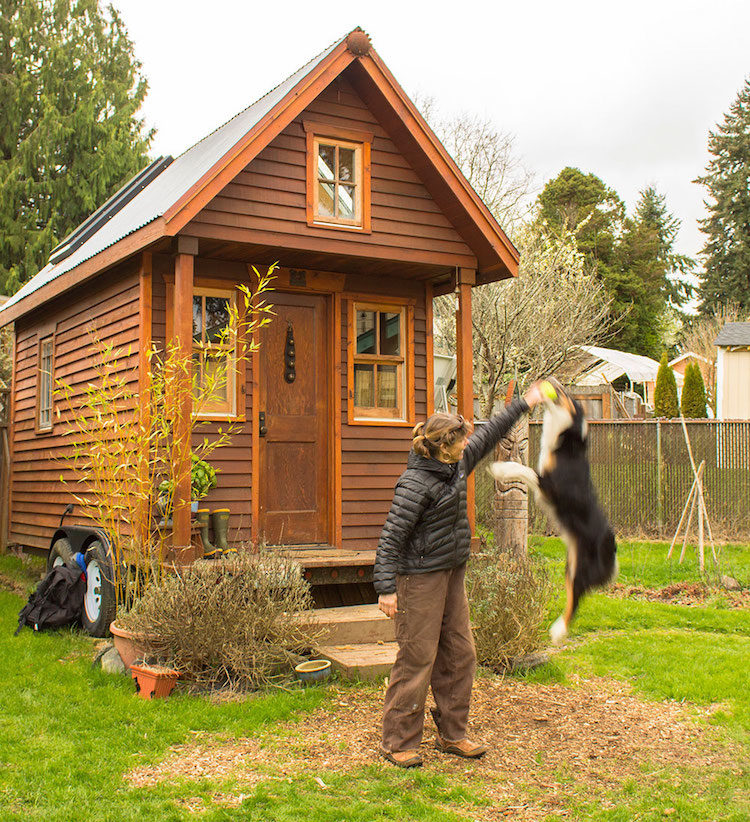
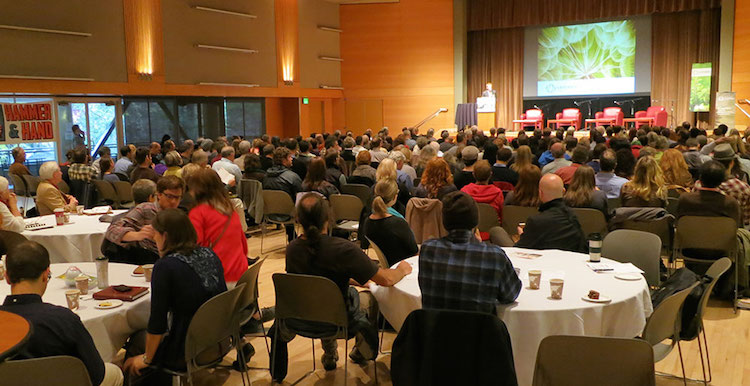
There are laneway houses, then there are what I call driveway houses. That would be the next step, a tiny house on wheels legally parked beside or behind a regular house. The house could be owned by the landlord or they could just rent out the space to a tiny house owner. It could be regulated by codes for building and siting for safety and neighbourhood acceptability and would have it’s own hookups just like an RV pad. It would have a much lighter footprint than a laneway house, cost the homeowner a lot less to install hookups and if there were a network of these sites across the country it would make moving from city to city with a THOW a lot easier.
Moving to a new city for college or work? If there were legal parking places like this you could rent a spot just like you’d rent an apartment, but the actual living space could be your own tiny house. All the landlord has to provide is the space and hookups. Extra amenities like garden space could be negotiated as well.
Are there Tiny Home groups or movements to join in each state to push for some sort of standards for zoning for tiny homes? Is there one in Northern Virginia.